
When it comes to Vintage Rolex, hands are probably the most frequently changed parts during service, with the exception of movement components. So it is not surprising that many watches do not have their original hands. Most collectors would agree that having a correct set of hands is second only to the dial when it comes to having a complete watch, also known as "Full Factory Specification." Having the correct set of hands as it was intended by the designers also gives the watch a well balanced appearance.
Given the high value of Vintage Rolex timepieces, especially Submariners, understanding how the watch was configured at the time it left the factory, can be a financially worthwhile endeavor.
It should be noted that this section only addresses stainless steel models of the Submariner, GMT Master and some Explorer models. There are other limitations to the scope of this compilation due to anomalies that may exist for a number of reasons, including:
- Rolex used several third party manufacturers to produce hands, similarly to dials. Therefore, some slight variances in color, size and shape may exist amongst hands from the same periods covered in this section.
- The hands have a tendency to accumulate oil and oxidation over the years, which sometimes changes their color and texture, making them difficult to analyze and categorize properly.
If you have any comments or additional useful information, please feel free to contact me.
The Luminous Material section may offer additional information that may be useful in evaluating hands because of the distinct glows that emanate with exposure to UV light.
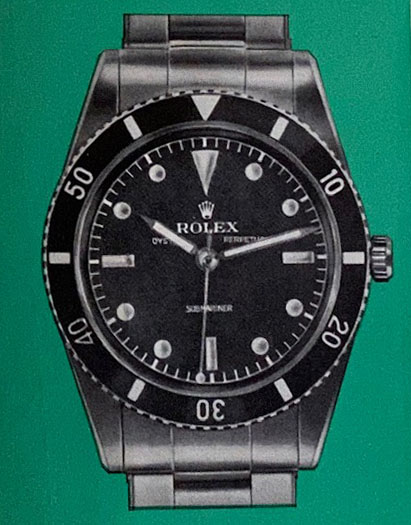
Reference 6204 as illustrated in a Rolex catalog printed in 1954.

The hands that were used on Rolex Sport models varied greatly in terms of their appearance. Inevitably, their diversity has led to some difficulty for dealers and collectors alike in determining the "correctness" of some configurations. The following guide should be be helpful in clearing up some of the mystery and establish guidelines that may be helpful in the classification of Rolex hands.
There were two "Styles" of hands produced for Stainless Steel Rolex Sport Models that fall into two distinct time periods.
- "Flat" style hands also known as "Gilt Hands," were produced from 1953 until 1966. There were several shapes, sizes, as well two kinds of luminous material used throughout these years.
- "Curved" style hands were produced from 1966 through the end of production of watches with 4-digit reference numbers (~1988) and continued beyond. Unlike their predecessors, Curved hands were all the same size and shape. These hands had a a chrome finish, except those intended for gold models, which had gold plating.
Gold plated Curved hands are sometimes incorrectly used as replacements on stainless steel models with gilt dials.
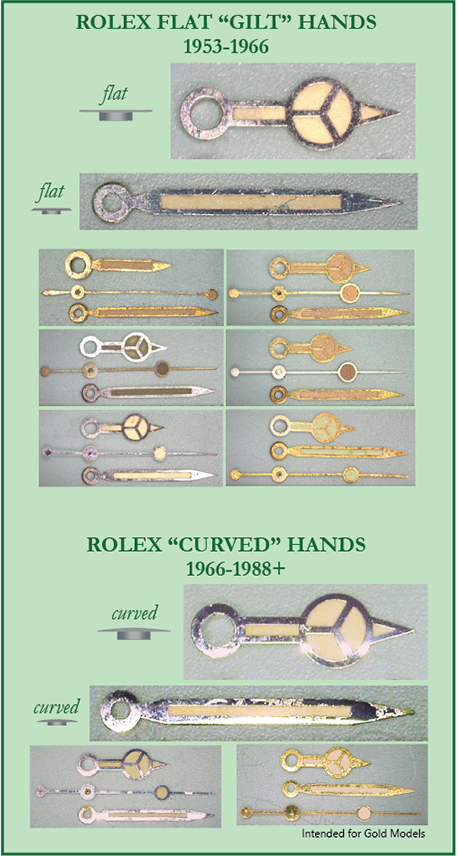

Rolex designers went to great lengths to make their watches appear aesthetically balanced. in order to achieve the best visual appeal of the dial and hands when assembled, the minute and sweep seconds hands were designed to have the illusion of gliding above the dial, barely grazing the minute track as they moved about the face of the watch.
In order to achieve this, the sweep seconds and the minute hands were manufactured in three (3) distinct lengths when measured from the center post to the tip. These lengths or sizes were specific to the dials for which they were designed. Based on this assumption, we can deduce the intended years and reference models for which hands were produced.
- 13mm were intended for Small Crowns 6204, 3205, 6536-1 and 5508. It was also the size used on other Sport Models with the Chapter Ring also known as "Closed" minute tracks. This would include the GMT Master 6542 and 1675 as well as the Explorers 6610 and 1016. This length ceased to exist in 1963 when the Chapter Ring minute track design was eliminated from the GMT Master and Explorer references.
- 12.5mm were used on all the Big Crowns 6200, 6538, 5510 and the Small Crown 6536/8 Double Reference. Later, this same length was used on the Submariner 5512 and 5513. These dive were meant to reach greater depths leading to a thicker case design. Which in turn, led to a slightly smaller dial size and a proportionally shorter radius for the minute track. This length also ceased being used in 1963 at the same time the Chapter Ring minute track design was eliminated.
- 12mm hands were introduced in 1963 and used thereafter. The Chapter Ring design was phased out and replaced with the "Open" minute track the same year this size was introduced. With this evolution, the radius of the minute track became constant across all three lines of Submariner, GMT and Explorer models. Therefore, the Submariner (5512/5513), GMT 1675 and Explorer 1016 all use this new size, eliminating the need for the previous two lengths altogether.
1963 was a year which saw the greatest number of dial variants produced up to that point specifically for Sport Model references. During this year of transition, the Submariner, GMT and Explorer dials evolved from the Chapter Ring minute track into the Open minute track design. It is not surprising that hands used during this year also saw a bit more diversity than prior years. One manifestation of this divergent year, are some of the early Open Track dials that are manifested with hands that reach past the hash marks of the minute track. This visual element was probably not intended by the original watch designers, but ended up to be a practical choice for the technicians tasked with assembly quotas. In addition to the divergence in length, it is also not uncommon for the sweep seconds hand finish or color to be different than the hour and minute hands during this period.
Minute and/or Sweep Second hands that are too long and extend past the minute track of the dial are probably not intended for the watch in question. Unless the watch is from the 1963 transitional period and has an Open Track dial variant, the hands should not extend past the minute track. For example, when Small Crown hands installed on a Big Crown, they would be 0.5mm longer than intended and would therefore cross the minute track. The converse would also be true, and the hands would be short of the minute track.
Minute and/or Sweep Second hands th that fall short of the minute track are never good news. There are no exceptions when these hands should not reach the minute track.
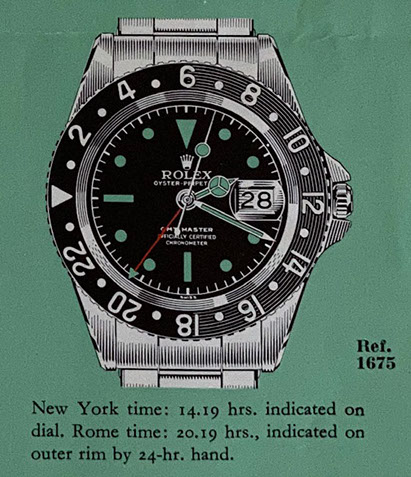
Chapter Ring (Closed) Minute Track Dial
GMT Master as illustrated in Rolex Brochure ca. 1961
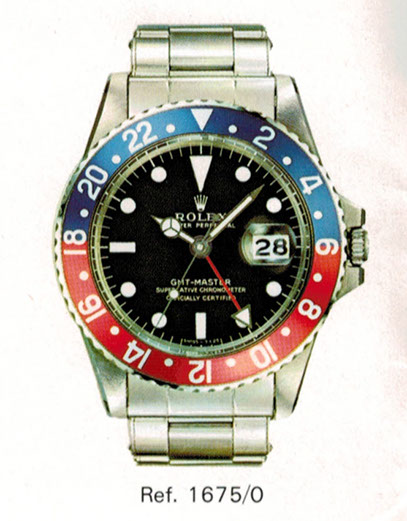
Open Minute Track Dial
GMT Master as illustrated in Rolex Brochure ca. 1974
Small Crowns '53-62
Big Crowns '54-59
Submariners '59-88
GMT '55-78
13mm/12,5mm/12mm
Gallery
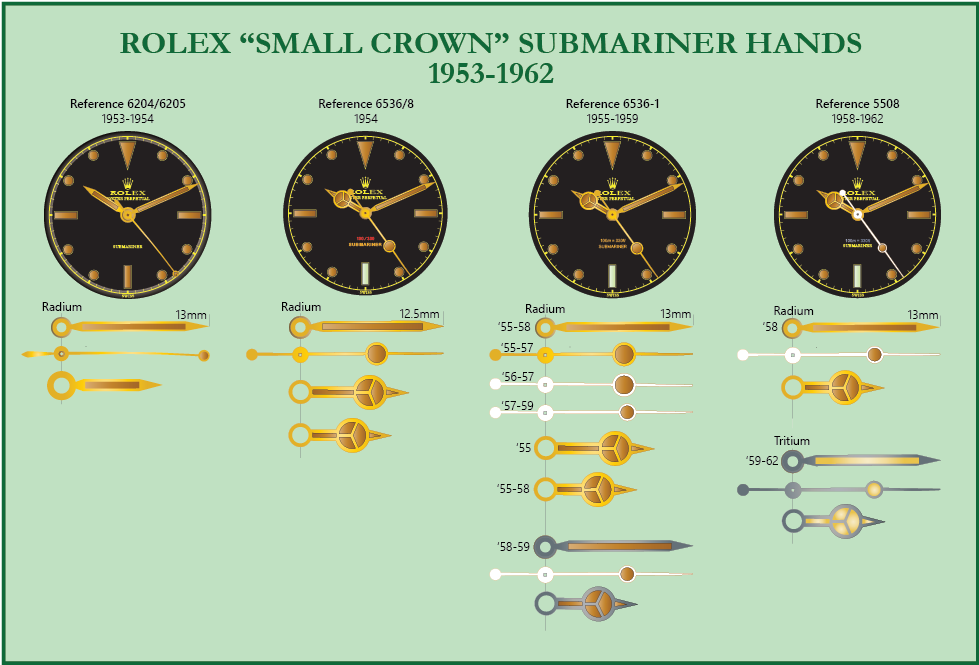
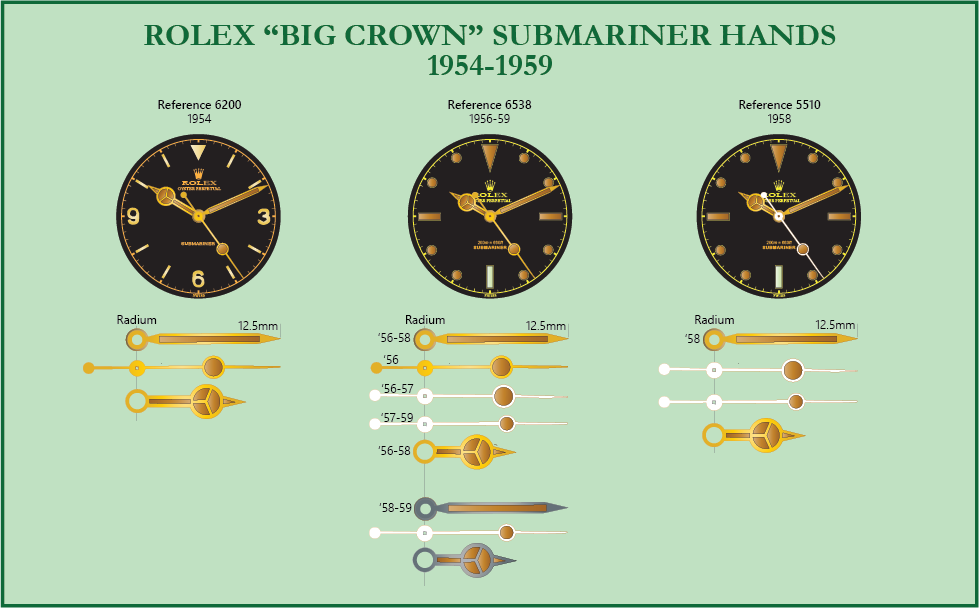
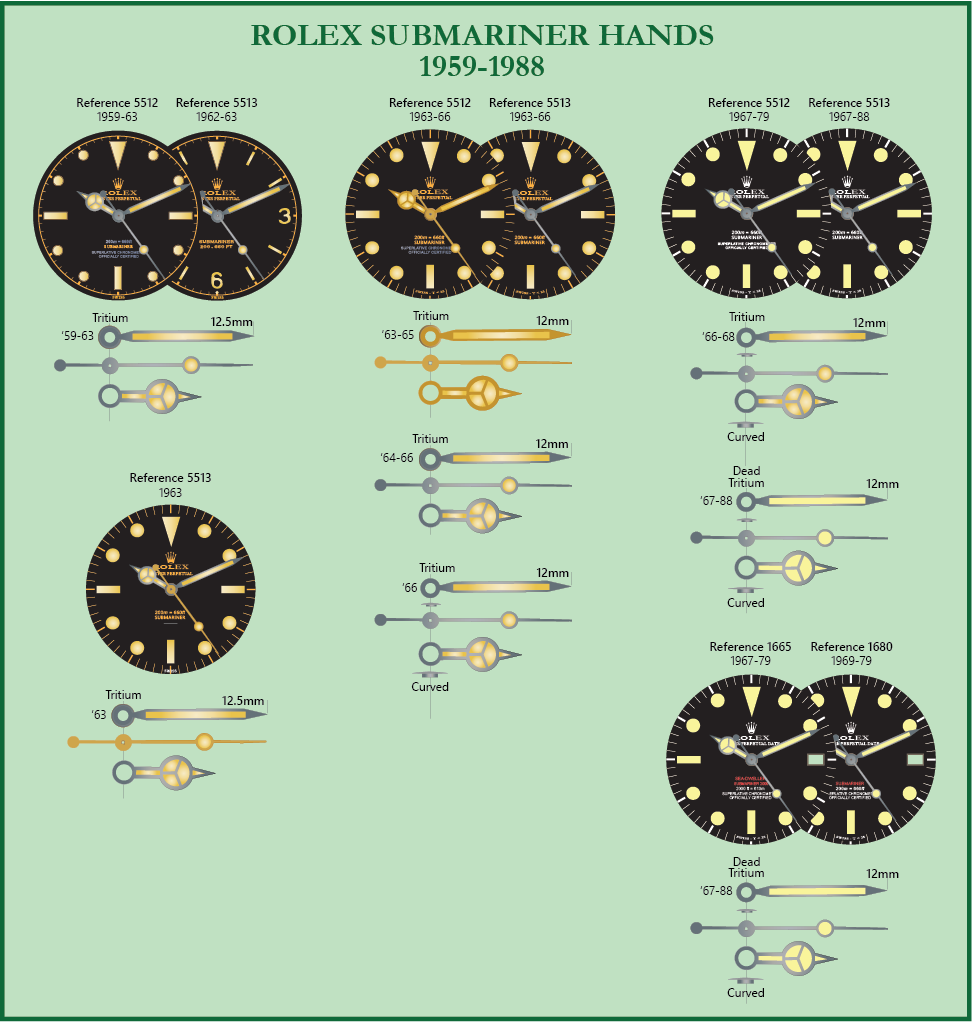
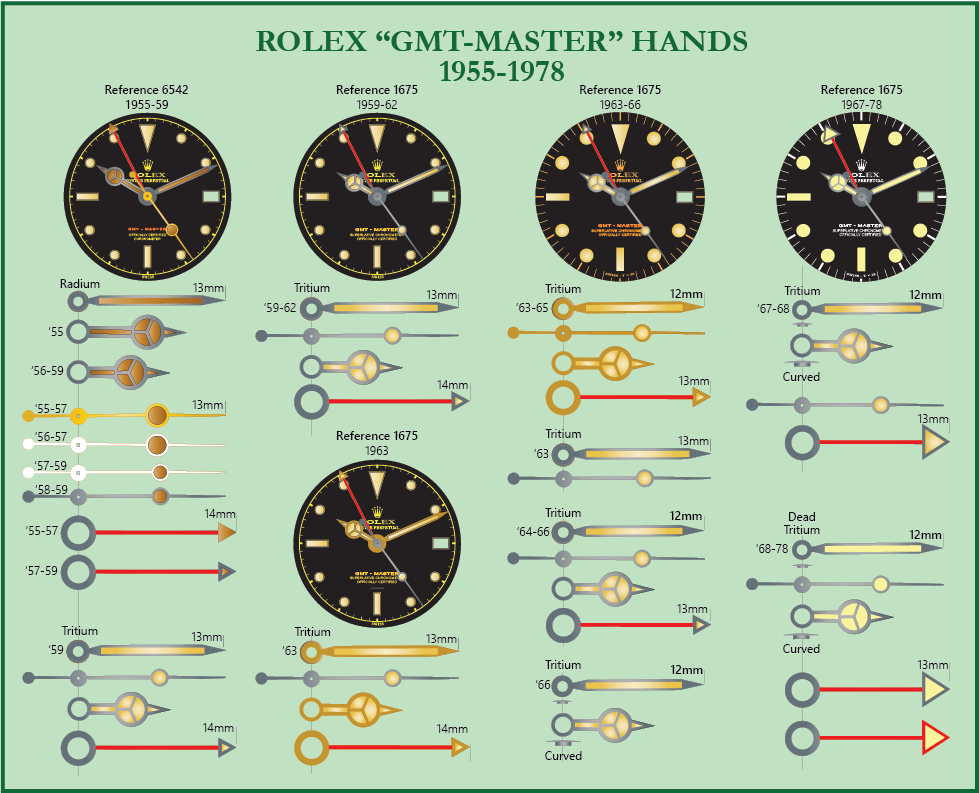
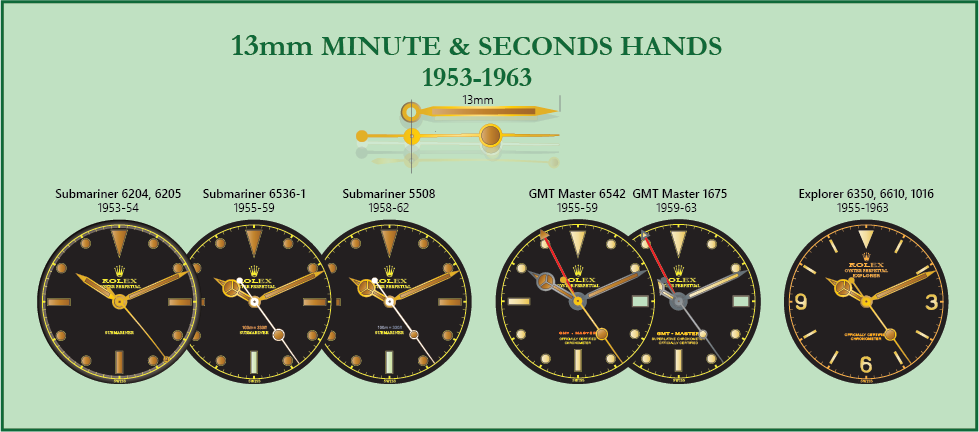
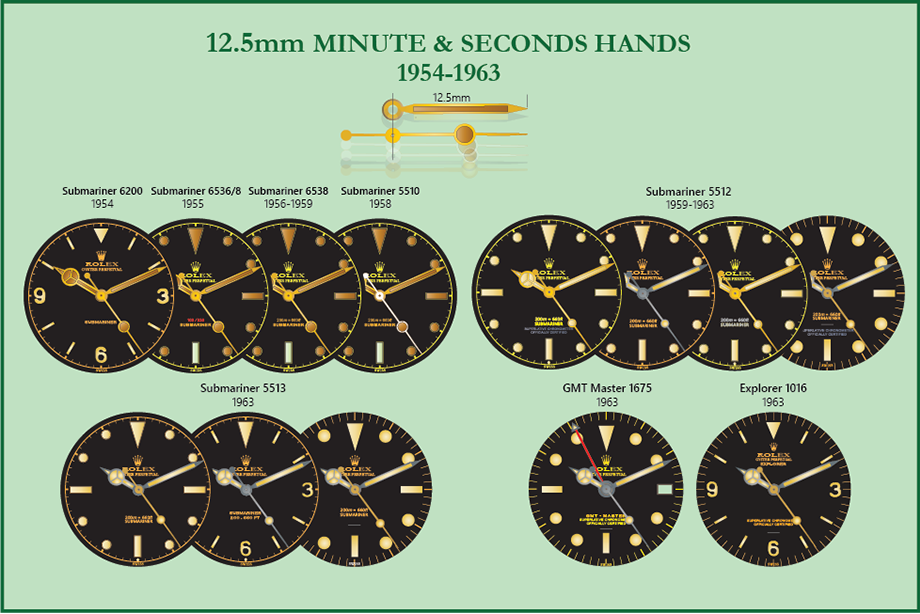
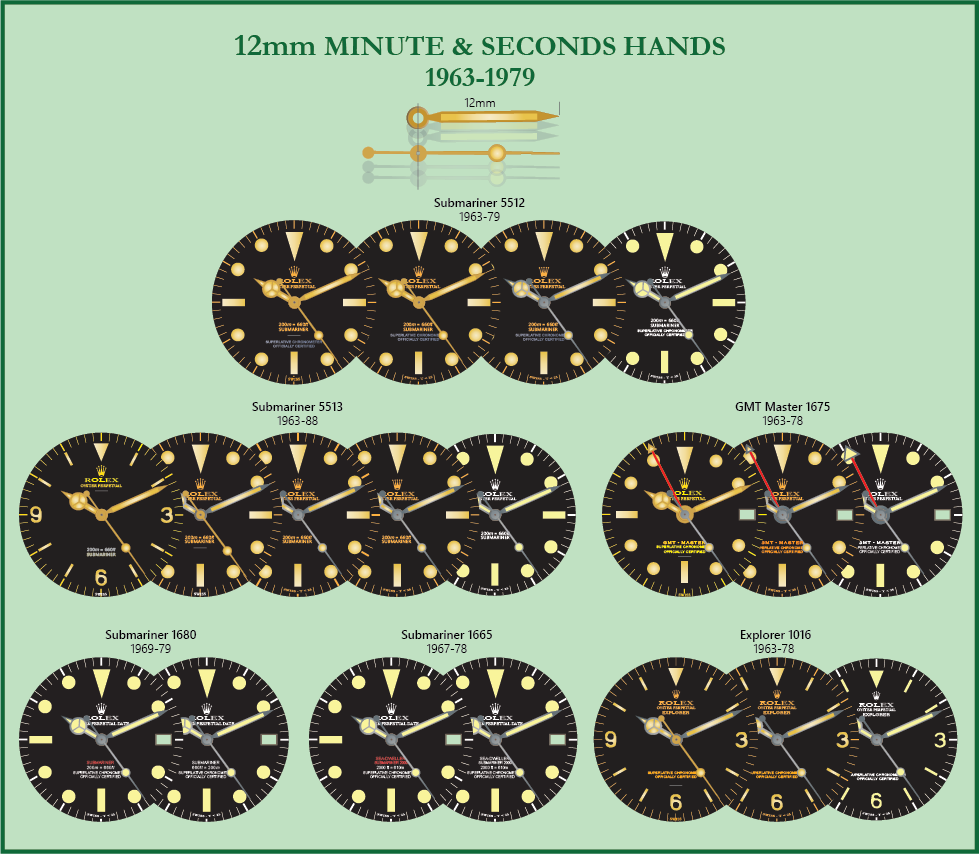

Submariner 6204/6205 ca.1953-1954
Gilt Pencil Hands (Radium)
13mm Minute Hand/Sweep Seconds Hand
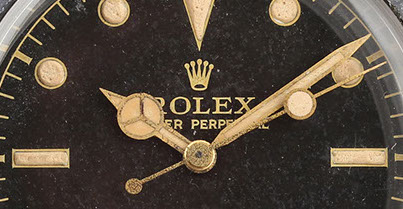
Submariner 6536/1 ca.1956
Gilt Hands (Radium)
Big Bubble Sweep Seconds
13mm Minute Hand/Sweep Seconds Hand
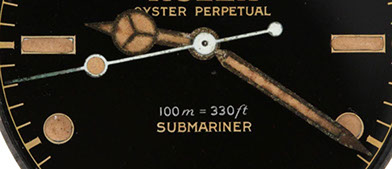
Submariner 6536/1 ca.1959
Flat (Gilt) Steel Hands (Radium)
White Sweep Seconds
13mm Minute Hand/Sweep Seconds Hand
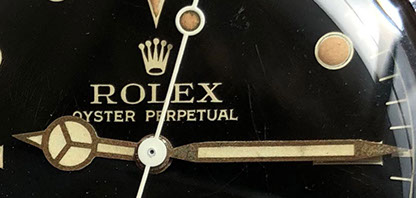
Submariner 5508 ca.1958
Flat (Gilt) Steel Hands Hour/Minute Tritium
Radium White Sweep Seconds
13mm Minute Hand/Sweep Seconds Hand
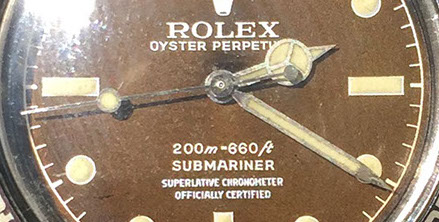
Submariner 5512 Chapter Ring ca.1961
Flat (Gilt) Steel Hands Tritium
12.5mm Minute Hand/Sweep Seconds Hand
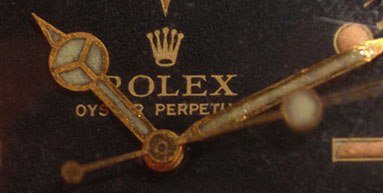
Submariner 6536/1 Red Depth circa 1955
RELUMED Gilt Hands
Long Hour, Big Bubble Sweep Seconds
13mm Minute Hand/Sweep Seconds Hand
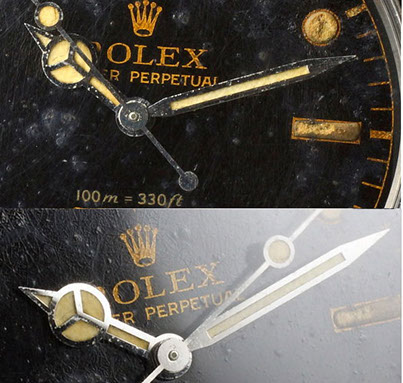
Submariner 6536/1 ca.1958
Curved Tritium Service Hands
12mm Minute Hand/Sweep Seconds Hand
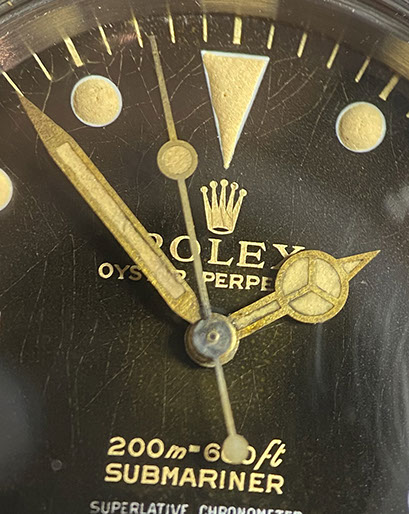
Submariner Open Minute Track 5512 ca.1965
Flat (Gilt) Steel Hands Tritium
12mm Minute Hand/Sweep Seconds Hand
RolexHaven.com is intended for informational purposes only and is in no way sponsored, endorsed,
or affiliated with Rolex U.S.A., Rolex S.A. or any other Rolex worldwide subsidiary. © All Rights Reserved 2020